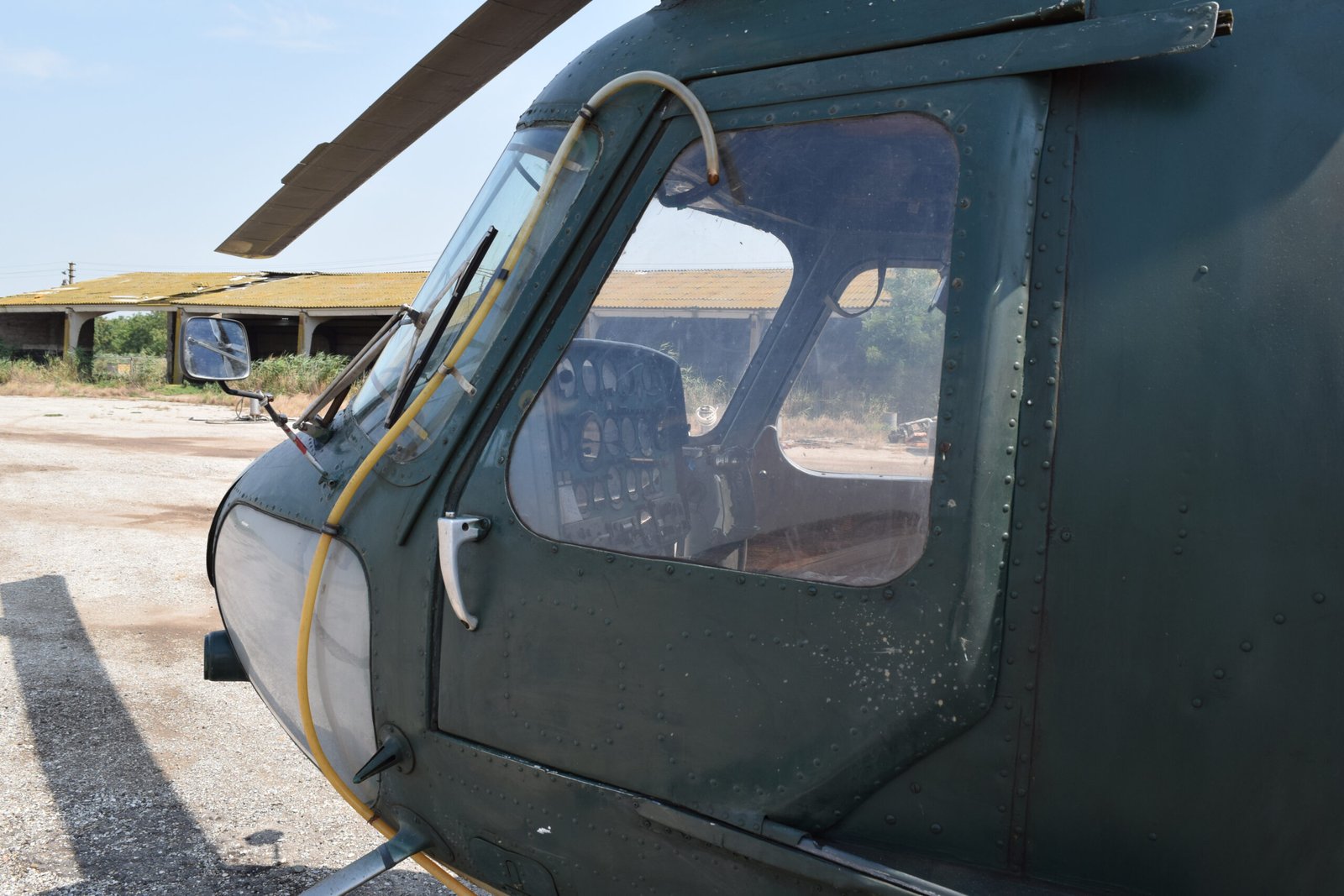Simulators
From Runway to Reality: The Transformative Power of Drones
In the realm of aviation, the intersection of technology and training has reached unprecedented heights. The evolution from traditional flight methods to modern innovations like drones illustrates a transformative journey that reshapes both our skies and our training methodologies. As we delve into this airborne revolution, it becomes clear that embracing technology is not just optional; it’s essential for anyone aspiring to soar in the aviation world.

First and foremost, simulators have revolutionized aviation training. Gone are the days when aspiring pilots solely relied on hours spent in real aircraft. Today’s sophisticated flight simulators replicate every conceivable scenario a pilot might face, providing a safe environment for skill enhancement. These simulators range from basic to highly advanced systems, enabling pilots to practice everything from routine takeoffs to emergency landings without risking lives or equipment. This immersive experience cultivates confidence, sharpens decision-making skills, and facilitates better retention of knowledge—making it a cornerstone of modern pilot education.
For those seeking insight into the vast landscape of aviation commentary and expertise, numerous blogs and websites serve as invaluable resources. Sites like *Airliners.net* offer forums for discussion among aviation enthusiasts, while *The Points Guy* provides tips on maximizing travel rewards—highlighting how various technologies can enhance air travel experiences. Additionally, social media platforms such as Instagram and Twitter buzz with accounts dedicated to aviation photography and industry news. Accounts like @AviationDaily or @PilotVlogs engage followers with captivating visuals and updates about current events in the aviation sector.

Recognizing the need for continuous learning in this rapidly evolving domain is crucial. Online aviation courses have surged in popularity, making education accessible regardless of geographic location. Institutions like Embry-Riddle Aeronautical University offer comprehensive ground schools that cater to all levels—from novice flyers to seasoned professionals looking to update their skills amidst technological advancements. Platforms such as Coursera feature specialized courses on drone operations or aerodynamics that allow learners flexibility while diving deep into complex subjects at their own pace.
With this technological boom comes a plethora of job opportunities within the field—especially for pilots trained in drone operation. According to recent FAA reports, commercial drone usage is projected to grow exponentially over the next decade across various sectors including agriculture, real estate, emergency services, and logistics. This demand creates an enticing career path for those who already possess piloting skills or seek certification specifically tailored toward unmanned aerial vehicles (UAVs).
Navigating this new terrain requires understanding regulatory guidelines set forth by authorities like the Federal Aviation Administration (FAA). Their website serves as an essential resource where budding pilots can find information on licenses needed for drone operators alongside safety regulations necessary for compliant flying practices. The FAA’s Remote Pilot Certification program ensures that individuals are well-versed in operating drones safely while following established protocols—a vital component in promoting responsible use as this technology proliferates.
In conclusion, as we transition from runways crafted for manned flights towards expansive skies ripe with possibilities offered by drones, embracing these innovations leads us toward exciting futures within aviation careers—ones filled with endless opportunities for growth and exploration. The synergy between technology training via simulation and online coursework encapsulates a commitment to excellence that will undoubtedly shape tomorrow’s aviators into pioneers ready to navigate uncharted territories above us all!
Wings of Change: How Aviation is Adapting to Environmental Challenges
As the world grapples with climate change, the aviation industry finds itself at a pivotal crossroads. The soaring demand for air travel, combined with concerns about environmental sustainability, has pushed the sector to embrace innovation like never before. From cutting-edge technology training programs to the rise of drones and online courses, aviation is evolving rapidly in response to these challenges.
One of the most significant technological advancements in aviation training is the use of simulators. Gone are the days when aspiring pilots relied solely on traditional flight instruction. Today’s state-of-the-art simulators provide an immersive experience that closely replicates real-world flying conditions. These high-fidelity environments allow students to practice maneuvers, develop problem-solving skills, and understand complex systems without leaving the ground. Moreover, they significantly reduce fuel consumption and emissions associated with training flights, thus promoting greener practices right from the start.
For those eager to delve deeper into aviation discussions and stay updated on industry trends, a plethora of blogs and websites exist. Some noteworthy mentions include “The Points Guy,” where you can find insights into airline loyalty programs; “AirlineReporter,” which covers airline news and reviews; and “Flying Magazine,” offering expert advice on various aspects of flying. Social media has also become an invaluable resource; platforms like Twitter host vibrant conversations under hashtags such as #AvGeek or #AviationNews, making it easy for enthusiasts to connect.
In addition to blogs and social media channels, numerous online courses offer aspiring aviators critical knowledge. Ground schools have transitioned online, providing flexibility for those who may not be able to attend in-person classes. Institutions like Embry-Riddle Aeronautical University and Purdue University Global offer comprehensive curricula covering everything from basic aerodynamics to advanced navigation techniques. Online platforms such as Coursera or Udemy also feature specialized courses tailored for specific interests within aviation—ideal for anyone looking to enhance their skills while balancing other commitments.

The increasing popularity of drones marks another transformative change within the aviation landscape. As technology advances, drones are being utilized across various industries—from agriculture monitoring to disaster relief efforts—showcasing their versatility beyond traditional flight operations. The Federal Aviation Administration (FAA) has been proactive in establishing regulations that facilitate safe drone operations while promoting innovation in this burgeoning field. For prospective drone operators or enthusiasts wanting more information about regulations or certification processes, visiting FAA’s dedicated drone page provides essential resources.
Pilot jobs continue evolving alongside these changes too! The industry’s push towards sustainability has led airlines to seek candidates skilled not only in flying but also knowledgeable about eco-friendly practices. Companies are increasingly looking for pilots who understand green technologies or have experience operating electric aircraft—a trend that will likely gain momentum in coming years.
To navigate this ever-evolving landscape effectively, staying informed through reliable sources remains crucial. The FAA’s official website serves as a treasure trove of information regarding licensing requirements, regulations updates, and safety guidelines—ensuring aviators remain compliant while pursuing their passion.
In conclusion, aviation stands at a remarkable juncture where tradition meets innovation driven by environmental necessity. With enhanced training methods using simulators, accessible online education platforms, exciting opportunities with drones—and a commitment toward sustainable practices—the future looks bright for those ready to embrace these wings of change!
A Pilot’s Perspective: Adventures in the Skies
As the sun rises and casts a golden hue across the horizon, the thrill of flying beckons. For those of us fortunate enough to don a pilot’s wings, every ascent into the skies is an adventure waiting to unfold. But the journey to become a skilled aviator is paved with rigorous training, innovative technology, and continuous education.
Aviation has evolved dramatically over the past few decades. Today’s pilots are equipped with advanced tools and technologies that were once confined to science fiction. Flight simulators have taken center stage in pilot training, providing an immersive environment where aspiring aviators can hone their skills without leaving the ground. These high-tech devices replicate real-world flying conditions—complete with turbulence, weather changes, and emergency scenarios. Simulators not only save costs but also allow for repeated practice of critical maneuvers until they become second nature.

Alongside simulators, online resources for aviation enthusiasts and professionals abound. Several blogs and websites cater to pilots at all stages of their careers. Some notable mentions include “The Pilot’s Blog,” which shares personal experiences from aviators around the world, and “Flying Magazine,” offering insights into aviation news and trends. Social media platforms like Instagram and Twitter have become bustling hubs for pilots to connect; hashtags such as #PilotLife or #AvGeek draw in thousands sharing breathtaking aerial views or snippets from their cockpit adventures.
For those looking to formalize their aviation knowledge, numerous online courses and ground schools are available today. Organizations such as Gleim Aviation or King Schools provide comprehensive training programs covering everything from private pilot licenses to advanced certifications. The convenience of studying at home while balancing work commitments makes these programs incredibly appealing for aspiring pilots eager to take flight.
But let’s not forget about job opportunities within this dynamic industry! The demand for skilled aviators continues to rise as airlines expand operations globally. Pilots can find positions ranging from commercial airline jobs to corporate flying roles or even cargo transport services. Additionally, niche markets like agricultural aviation or aerial photography provide unique pathways for those looking to carve out a distinctive career in the skies.
We’re also witnessing a revolution courtesy of drones—a game changer in both recreational use and industry applications! From delivering packages to surveying landscapes, drones offer endless possibilities while requiring specific FAA regulations for operation. Pilots who venture into this realm must familiarize themselves with Part 107 rules governing commercial drone usage.
For anyone interested in exploring more about aviation regulations or seeking guidance on becoming a certified pilot, resources from the Federal Aviation Administration (FAA) are invaluable. Their website provides comprehensive information on licensing requirements, safety guidelines, air traffic control procedures, and much more essential data that any aspiring aviator should know.

In conclusion, being a pilot is more than just operating an aircraft; it’s about embracing technology through flight simulations while continuously learning through online courses and connecting with fellow aviation enthusiasts across various platforms. With evolving regulations surrounding drones and consistent demand for qualified professionals in commercial aviation, there’s never been a better time to pursue your passion for flying! So strap in—your adventure awaits high above the clouds!
Flight Paths: How Aviation is Shaping Global Connectivity
In an era where the world feels smaller than ever, aviation plays a pivotal role in knitting together distant regions, cultures, and economies. The advancements in technology not only enhance safety and efficiency but also shape the future of global connectivity. As we soar through the skies, let’s explore how aviation technology training, online resources, and emerging trends like drones are revolutionizing this industry.

Aviation technology has come a long way since the days of wooden biplanes. Today’s pilots rely heavily on sophisticated simulators that replicate various flying conditions and scenarios. These state-of-the-art training tools allow aspiring aviators to hone their skills without leaving the ground. Simulators provide a risk-free environment for learning, enabling pilots to navigate thunderstorms or emergency situations while receiving real-time feedback from instructors. This shift towards virtual training is not just cost-effective; it enhances safety by ensuring that pilots are well-prepared before they take to the skies.
For those looking to delve deeper into aviation beyond traditional flight schools, a plethora of online courses and ground schools are available at your fingertips. Platforms such as Coursera and Udemy offer specialized courses covering everything from aerodynamics to air traffic control principles. The flexibility of these programs allows individuals to learn at their own pace while balancing other commitments—perfect for those aspiring to become certified pilots or aviation professionals.
In addition to formal education, staying informed about industry trends is crucial for anyone passionate about aviation. A wealth of blogs and websites can serve as invaluable resources for insights into current events, technological advancements, and career advice within the field. Some notable mentions include:
1. **AirlineGeeks.com** – Provides up-to-date news on airlines around the globe.
2. **ThePointsGuy.com** – Focuses on travel tips and maximizing loyalty points.
3. **FlyingMagazine.com** – Offers expert reviews on aircraft along with pilot stories.
4. **PPRune.org** – A popular forum among pilots where they share experiences and advice.
5. **AviationWeek.com** – Delivers in-depth analysis of aerospace developments.
Social media platforms also play a significant role in connecting aviation enthusiasts worldwide. Twitter accounts like @AeroNewsNet keep followers updated on breaking news, while Instagram profiles such as @PilotLife showcase stunning aerial photography alongside glimpses into a pilot’s daily life.

As we explore further into modern aviation landscapes, drones are proving transformative—opening new avenues for connectivity and commerce while raising questions about regulations and airspace management. Drones have found applications beyond mere recreational use; industries such as delivery services, agriculture, surveillance, and even emergency response have started integrating unmanned aerial vehicles (UAVs) into their operations.
For those intrigued by this burgeoning sector or considering a career in piloting drones commercially, it’s essential to understand FAA regulations governing drone usage. The Federal Aviation Administration provides comprehensive resources online that cover licensing requirements for remote pilots (Part 107 certification), safety guidelines for drone operation, and tips for navigating airspace restrictions.
So whether you’re an aspiring pilot eager for knowledge or simply a curious traveler keen to understand more about our interconnected world through aviation—there’s never been a better time to get involved in this dynamic field! With technology advancing rapidly alongside educational opportunities expanding infinitely—aeronautical dreams can be transformed into reality faster than ever before! Embrace your passion today; who knows where your flight path may lead?
Wings of Change: How Aviation is Transforming Global Travel
In the ever-evolving landscape of travel, aviation stands at the forefront, catalyzing a transformation that reshapes how we explore our world. With technological advancements, innovative training methods, and a burgeoning interest in drones, the future of aviation is as thrilling as it is complex. Let’s delve into how these elements are revolutionizing global travel.
One of the most significant shifts in aviation today stems from enhanced technology training. Gone are the days when pilots relied solely on traditional flight school experiences. Modern simulators have taken center stage in pilot training programs worldwide. These high-tech devices provide an immersive learning environment where aspiring aviators can practice various flight scenarios without ever leaving the ground. From emergency landings to navigating inclement weather, simulators offer invaluable hands-on experience that prepares pilots for real-world challenges.

For those eager to dive deeper into the world of aviation, a plethora of online resources awaits. Numerous blogs and websites cater to both enthusiasts and professionals alike. Websites like Aviation Week and FlightGlobal deliver industry news while blogs such as AirlineReporter and The Points Guy offer insights into travel trends and tips for maximizing benefits from loyalty programs. Social media platforms amplify this knowledge-sharing; follow accounts like @AviationDaily on Twitter or @AirplaneMode on Instagram for daily doses of aerial inspiration.
If you’re considering a career as a pilot or wish to further your aviation education, there’s no shortage of online courses available today. Institutions like Embry-Riddle Aeronautical University offer comprehensive programs ranging from private pilot certifications to advanced degrees in aeronautics. Ground schools provide essential knowledge about aircraft systems, navigation techniques, and regulations governed by authorities such as the Federal Aviation Administration (FAA). For those interested in becoming commercial pilots or flight instructors, these educational pathways are critical stepping stones toward achieving your goals.
The increase in drone technology is another exciting facet revolutionizing aviation today. Drones have transitioned from niche gadgets to vital tools across various sectors—including photography, agriculture, delivery services, and even disaster management. Their ability to access hard-to-reach areas quickly has made them indispensable assets in numerous industries. With the FAA actively working on integrating drones into national airspace through updated regulations and safety protocols, it’s clear that their presence will only grow stronger.
A wealth of resources exists for staying informed about drone operations too—check out the FAA’s dedicated pages on remote pilot certification or Part 107 regulations for commercial drone use. Engaging with local UAV communities via social platforms fosters collaboration among enthusiasts looking to share insights or troubleshoot challenges together.
As we embrace this era of rapid change within aviation—driven by technological innovation and evolving educational frameworks—it’s essential not just to keep up but also to participate actively in this dynamic field. Whether you’re aspiring for a cockpit seat or simply enjoy watching planes soar through azure skies, understanding these transformations enriches your appreciation for global travel’s intricacies.

In conclusion, as we stand at this remarkable juncture where tradition meets technology within aviation realms—from sophisticated simulators enhancing pilot training to drones redefining logistics—the wings of change are indeed lifting us into an exciting future filled with possibilities! So buckle up; it’s going to be one exhilarating flight ahead!




